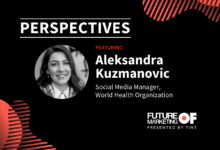Event marketing is different today…because events are different. They’re not the same in-person exclusive experiences we ran every year. They’re far from the webinars we once called a virtual event. Events aren’t what they used to be, which means neither can your marketing.
Hybrid events are here to stay, and it’s clear they involve new marketing strategies and messaging. We can’t expect our attendees to understand what our new hybrid events look like, will feel like, or if they’ll be worth their hard-earned money. We have to show them.
There are 3 steps every event marketer needs to strategize:
#1: How they’ll market pre-event to in-person and virtual prospective attendees
#2: How they’ll market the event WHILE it’s happening
#3: How they’ll market the event once it’s over
And each of these strategies has a common pattern…
But first, we need to talk about why the future of events is hybrid.
The Future of Event Marketing is Hybrid
The past year showed marketers that people will happily join (and pay for) online events. But, it also showed that people *like* the option of choosing between an in-person or hybrid ticket. Cue the hybrid event: the future of events and event marketing.
With hybrid events, attendees can choose to pop in virtually or attend in person. In-person attendees pay more for their tickets and get access to a different experience than virtual attendees. Yet, virtual attendees also get to experience something different than the in-person ticket holders.
Hybrid events need to attend to both ticket types, making sure that virtual ticket holders aren’t staring at a paused screen while in-person attendees go to networking events or special scheduled meetings. Virtual attendees should have their own host and even “room” where they’re taken to while in-person attendees have an exclusive experience.
And that’s the key to your event marketing strategy. Knowing that each type of audience is looking for a different experience and marketing to each of those experiences specifically.
How to Create an Event Marketing Strategy
There are 3 essential parts to event marketing that work in this order:
- Marketing ticket sales for the event
- Marketing during the event
- Marketing post-event experiences/deliverables
#1: Marketing Ticket Sales for the Event
This is the obvious event marketing you know well. Your event marketing strategy starts at this step, getting people through the physical and virtual doors. Remember, the key is marketing to both in-person and virtual prospective attendees differently.
In-person experience comes with totally different benefits than a virtual experience. No, we’re not talking about the copy that says, “Watch this while wearing your pajamas!”. This is overused and hardly the case for your attendees. Realistically, they’re looking to save money on their ticket…while still having confidence they’ll get a great experience from the event.
“Online event experiences (especially webinars) are very oversaturated right now. How do I capture audience attention? Drive registration? Why join this event over hundreds of others?”
– Micaela Wanzer, Field Marketing & Events, Tubular Labs
Marketing ticket sales for your event needs to follow two rules:
- Market to in-person attendees
- Market to virtual attendees
This part of your marketing plan involves your owned, paid, and earned distribution channels. You’ll want to have an omnichannel presence that spans:
- Your social media profiles
- Paid advertising on social, Google, newsletters, blogs
- User-generated content from past attendees, affiliates, and your network
At this stage of marketing, you’re looking to get attention by creating urgency. Urgency for event marketing happens through the diminishing time somebody has to buy a ticket. A few tips for creating urgency in your marketing strategy:
- Reiterate the end dates for early bird pricing and the last day to buy tickets (physical AND virtual).
- Add special deals and discounts only available for early bird tickets (reiterate to your audience that they won’t get these deals if they don’t buy ASAP).
- Create countdown timers on social media, email, and landing pages to conceptualize how much time is left for discounted pricing and exclusive offers.
Repetition is key in your pre-event marketing strategy. Hubspot benchmarks 8 touch points as the ideal amount. To avoid maxing out your content production budget and team’s time, add user-generated content to your organic and paid channels. There’s a 29% increase in web conversions when websites feature user-generated content, and 92% of people are more likely to trust a recommendation from another person over branded content.
#2: Marketing During the Event
The customer journey doesn’t end after purchase—especially for events looking for high customer lifetime value. After attendees swipe their credit cards and fly in for the event, or start streaming it on their laptop, the marketing needs to continue.
“No matter what innovations are in our future, we will always be marketing to people. There will be tons of new trends, but no matter what’s next, empathy, authenticity, and a genuine interest in helping others will propel your brand forward.”
There are two people you’re marketing to:
#1: The Attendees (Virtual and In-Person)
At this stage of event marketing, you’re still talking about all the special discounts or exclusive offers your attendees get from joining the event. You’re mentioning the guest speakers, what attendees will learn, and continuously reiterating what they can expect from their time with your brand.
Using social walls, you can share attendees’ experiences publicly for other ticket-holders to see. This user-generated content creates the community behind your event, as people can see what other people are enjoying about the event and network with each other thanks to the connection you helped them make.
#2: Your Audience Who Didn’t Purchase Tickets
For this audience, lean into FOMO (fear of missing out). You want to share user-generated content from attendees showing what a great time they’re having, why they’re so happy they bought a ticket, and how they can’t wait to come back next year. This UGC is key to showing hot leads who chose to pass on the experience why they won’t want to make that same mistake next year.
Social walls can be made public, so your audience can follow along with what’s happening inside your event. You can also use TINT to automatically moderate content that gets repurposed directly to your marketing channels. Since brand engagements rise by 28% when consumers see a mixture of professional marketing content and user-generated content, this is also a great strategy for increasing audience engagement.
#3: Marketing Post-Event Experiences/Deliverables
And lastly, you’ll continue to market the event after it ends. You didn’t put all that time, money, and effort towards your event just to let all that momentum go to waste! Events spark so much user-generated content that you have to capture it and do something with it.
“Are we reaching the right buyers, at the right time? How are they interacting with our content and why? What is happening in our buyers’ lives that might make this campaign resonate (or not)? These are the questions that are forming the basis for how we will think about marketing campaigns going forward.”
– Rachel Truair is Senior Director of Revenue Marketing at Confluent
Your marketing channels should be filled with UGC showing what a great time the event was—and now it’s time to find and organize all the UGC from the event. This UGC gets published across your marketing channels for the next event to keep your hot audience primed to buy tickets. You don’t want them to forget the FOMO they felt from not attending. Keep showing them what a great time the event was and how valuable it was for the attendees that took the plunge and bought a ticket.
You’ll also want to use UGC across your marketing channels to create brand trust. 70% of consumers trust online peer reviews and recommendations more than professional content and copy. Even if you’re not selling tickets for your next event for another year, the UGC from this event can help you sell products, services, and other events.
Examples of Hybrid Event Marketing
The Met Gala
If there’s a 99% chance you’ll never attend an event, how can marketers get you to care about it? Ask the Met Gala. Every year the Met Gala hosts an extravagant party that’s so exclusive, there are rarely any photos or videos from inside the event. The Gala invites A-list celebrities from Elon Musk to Addison Rae and has them create UGC after UGC surrounding the event.
For attendees, their exclusive experience behind the secretive Met Gala doors is worth the $35,000 ticket. But, for everybody else, the UGC keeps them interested, and this pays out advertisers (making the Met Gala even more money). While inside the Gala isn’t a hybrid event, the amount of UGC spanning A-list platforms with tens of millions of followers turns this into something close to a hybrid event. In this case, it’s free to watch the red carpet, behind-the-scenes of stars getting ready, and the UGC from celebrity social platforms.
Chess Club
Going from the Met Gala to a chess club is the best way to show the flexibility of event marketing. Chances are you can’t get an avid chess player to watch the Met Gala red carpet—but you can intrigue them with a hybrid chess club. Professional chess player Sam hosts an in-person chess club every Thursday night. He also streams the experience through Zoom for people who can’t attend in-person.
By creating a hybrid experience, Sam can reach a larger audience that he seemingly sends towards his YouTube channel or private chess lessons. From big business (and $35,000 tickets) to a small town chess club—hybrid events are taking over.
#3: Corporate Events
We’re all used to getting a swag bag at corporate events with a branded t-shirt, pens, and water bottles. One of these is useful, and the rest quickly end up at the bottom of our suitcase to be dealt with later. The TINT team recently attended an event where they found something else in their swag bags…regional snacks, coffee from local roasters, and a local hot sauce.
Is this the future of event marketing? Our opinion is a loud, yes! Hybrid events can give and send swag bags of relevant, local products that impress their attendees. The attention to detail and the opportunity to feel like you’re bringing back a piece of that town or event with you builds great relationships with your attendees. We also venture to guess that people love to take photos and videos of these types of swag bags, creating even more useful UGC.
The Future of Event Marketing Isn’t a Secret
By now, it’s clear that the future of event marketing isn’t a secret only known by the top 1% of event marketers.
It’s obvious: hybrid events that market to in-person and virtual attendees.
The key is knowing how to market these events because it’s a different strategy than only in-person or virtual events. These events need a 3 step marketing approach that focuses on both types of attendees:
#1: Marketing Ticket Sales for the Event
#2: Marketing During the Event
#3: Marketing Post-Event Experiences/Deliverables
This is the future of event marketing, but the future of all marketing looks a lot different. If you want to see what the future holds for our industry, join the 50,000 other marketers who are reading the Future of Marketing on a regular basis. Get access to industry insights, strategies, and ideas as to how to create impactful marketing strategies.
Subscribe to the Future of Marketing here
“The future of marketing will only truly change for the people who work, study, and continue to learn from the industry’s evolution.
I believe the current culture will hinder progress; whereas, the people who adapt, change, and contribute will advance.“
– Siôn Rees, Brand Identity Designer for Welsh design agency Pentagon





